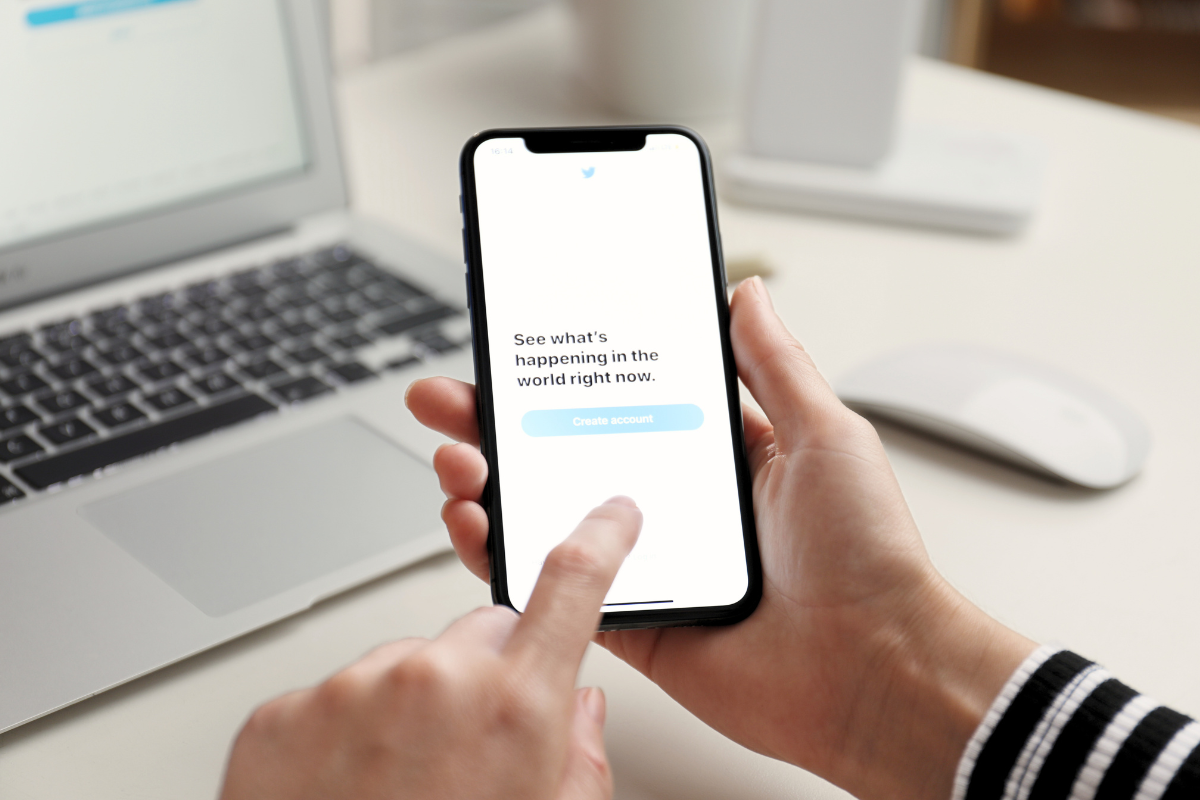Best Practices and Strategies for Schools to Combat Deep Fakes
“Uh, Dad? I think you should see this,” my 13-year-old son said carefully as he handed me his cell phone.
“It’s your Twitter account, but it’s not actually YOUR Twitter account,” he went to say.
As a school superintendent in Ohio, I was an early adopter of Twitter. I was disturbed by the negative narrative about public education when, in fact, every day, I was witnessing incredible teaching, innovative approaches to instruction, committed community involvement, caring administrators, and dedicated coaches and advisors who were positively changing students’ lives. I wanted to share those stories, and social media seemed like a quick and convenient way to do it. I quickly learned that it was also a quick and convenient way to connect with students through snow-day poem battles, engage with parents as I celebrated their kids’ performances, and recognize our values in action when I saw our students serving others or demonstrating sportsmanship.
But this day was different.
“What do you mean it’s not my account?”
“It isn’t dad. Look, it has your profile picture, your banner, and your username, but it only has a couple of posts and less than 100 followers. It doesn’t make any sense.”
I quickly checked my account to see if I had been hacked, but it was all there. No changes. My son was right. It didn’t make any sense. I understood a fake account with my profile picture and banner, but I couldn’t figure out my username.
It was our HS principal who put it all together.
“Phil, your username isn’t YOUR username.”
“Between you and my son, could someone just talk in plain English around here?” I asked, feeling a little frustrated and a lot confused.
“Your username is @philherman. All lowercase letters, right?” he asked.
“Yes. Go on…”
“Well, in that font, if you spell your username p…h…i…capital I…h…e…r…m…a…n, the capital I looks just like a lowercase l.”
Ahhhh! Did you ever have a moment when you knew a student should not have done something, but at the same time, you were a little bit proud of him? This was one of those moments. It was a really good fake.
But because students are students and secrets don’t stay secrets, it wasn’t long until the account was removed before it had a chance to call off school.
With the emergence of AI, I have been reminded of this Twitter fake and how good it was for 2018. But it is not 2018 anymore, and tools available today make creating a fake social media account look like child’s play.
Today’s deep fakes are fueled by emerging AI resources that make misinformation appear more realistic and harder to catch. Imagine a video or audio recording that looks and sounds exactly like someone you trust—say, a school superintendent or a well-known public figure—but it’s completely fabricated using advanced artificial intelligence and machine learning techniques. These technologies can manipulate or generate visual and audio content with a high potential to deceive.
Essentially, deep fakes are like sophisticated digital puppets that mimic real people, often used to spread misinformation or cause confusion. As an example of the capabilities that exist today, check out this YouTube video titled This is not Morgan Freeman. Deep fakes are not just science fiction; they’re here and capable of causing real-world issues, especially in an environment where trust is paramount, like in our schools.
I want to be clear. I am an AI fan, and I am excited to see the innovations that will occur in education and all areas of our lives when our students of today have an opportunity to apply these developing technologies to make the world a better place. However, we are naive if we don’t also recognize the power of nefarious actors to use AI to create deep fakes that have the potential to be disruptive to schools, communities, or even entire nations.
Building a strong communication ecosystem rooted in trust will not eliminate the threat of deep fakes but will help mitigate the effects. Here are three actionable tips for establishing clear, trustworthy communication channels:
Educate. Learning is key!
Many school districts are already doing a great job teaching students about digital literacy and critical thinking. Consider extending digital literacy opportunities to staff, parents, and community members. Understanding the basics of how deep fakes are created and recognizing the signs of fake accounts can greatly diminish the chances of being deceived.
Establish Official Communication Channels
One of the strongest proactive steps you can take to protect against the effects of a deep fake is to clearly identify and publicize official communication channels. Whether it’s the district Facebook page, Instagram account, ‘X’ handle, district website, or a dedicated email newsletter, make sure that the community knows exactly where legitimate information will come from. This could involve regularly updating the community on which platforms are officially used and reminding them to double-check the sources of suspicious posts. Make sure you only publish the channels that you consistently use and be sure to include your most important messages on each of the channels. In essence, you are helping your school community know that if what they are seeing did not come from one of these sources, they should be suspicious.
Build Relationship Capital through Community Engagement
One of the best ways to protect against digital deep fakes is to invest in relationships through regular chats with your community to strengthen them and build trust. A well-informed community is your best defense against misinformation. This could happen through public forums, Q&A sessions, Facebook Live events, or a key communicators network. Each of these engagement opportunities can be seen as a deposit in your relationship and trust bank account. The greater the “balance” in the account, the less likely it is that stakeholders will believe a message that isn’t consistent with your usual priorities and behaviors.
While we can never eliminate the threat of all circumstances that would result in today’s version of “Uh, Dad, I think you should see this…”, taking proactive measures today rooted in consistency and trust will help limit the effects of any attempts of deep fakes aimed at our schools.
At the Impact Group, we are experts in supporting school districts and superintendents to communicate what is most important to them. Using our strategic communication model, we help schools across the state of Ohio implement comprehensive strategies to reinforce priorities and support messaging during times of crisis. Get to know us!




